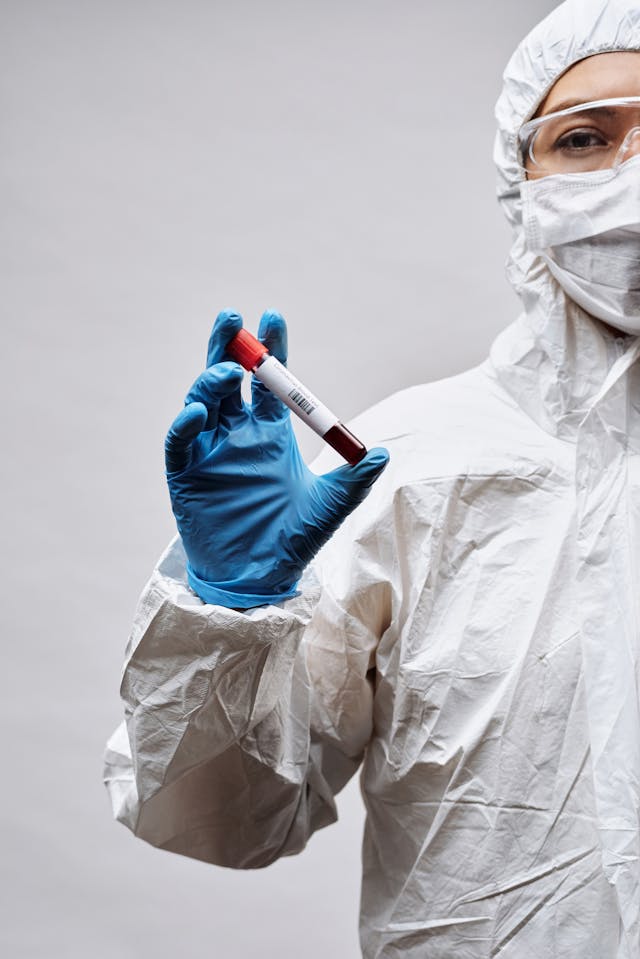Blood-borne pathogens pose a significant threat to public health, with infections such as HIV, Hepatitis B, Hepatitis C, and various other viral and bacterial diseases being transmitted through contaminated blood. Early detection is critical in preventing the spread of these diseases and ensuring effective treatment. Thanks to rapid advancements in medical technology, new and innovative techniques have emerged that offer improved accuracy, speed, and accessibility in detecting blood-borne pathogens. This comprehensive guide explores the latest technologies revolutionizing blood pathogen detection and their impact on global healthcare.
The Importance of Early Detection
Detecting blood-borne pathogens early can mean the difference between successful treatment and severe health complications. Early diagnosis helps in:
- Preventing disease progression and improving patient outcomes
- Reducing transmission risks, especially among healthcare workers and patients
- Enhancing disease surveillance and epidemiological studies
- Providing prompt and targeted treatments
Advancements in technology have led to the development of sophisticated diagnostic tools that make blood testing faster, more reliable, and more accessible.
Emerging Technologies in Blood Pathogen Detection
1. Next-Generation Sequencing (NGS)
NGS is one of the most significant breakthroughs in medical diagnostics, offering unparalleled sensitivity and specificity in detecting blood-borne pathogens. This technology allows for the identification of multiple pathogens in a single test by sequencing their genetic material. It is particularly beneficial in detecting emerging or rare infections that traditional methods might miss.
2. Polymerase Chain Reaction (PCR) and Real-Time PCR
PCR has long been a standard in detecting viral and bacterial infections. Real-time PCR takes it a step further by providing faster and more precise results. This method amplifies DNA or RNA fragments of the pathogen, allowing for highly specific and early-stage detection. It is widely used in identifying infections such as HIV, Hepatitis B and C, and other blood-borne viruses.
3. Microfluidics and Lab-on-a-Chip Devices
Microfluidic technology enables rapid and cost-effective blood testing through lab-on-a-chip devices. These small, portable devices can analyze blood samples in minutes, making them ideal for remote or resource-limited settings. They require minimal sample volumes and offer real-time pathogen detection, improving diagnostic accessibility worldwide.
4. Biosensors and Wearable Technology
Biosensors integrated into wearable technology are revolutionizing blood-borne pathogen detection. These devices can continuously monitor biomarkers indicative of infections and alert users or healthcare providers in real time. Such technology is particularly useful for high-risk individuals and healthcare professionals who require constant monitoring.
5. Artificial Intelligence (AI) in Diagnostic Testing
AI and machine learning algorithms are transforming blood-borne pathogen detection by analyzing vast amounts of data to identify infection patterns quickly. AI-powered diagnostics can predict outbreaks, enhance diagnostic accuracy, and assist in early intervention, ultimately reducing the spread of infectious diseases.
The Role of Rapid Testing and Point-of-Care Diagnostics
Rapid testing solutions have become a game-changer in blood-borne pathogen detection. These tests provide results within minutes and can be administered outside traditional healthcare facilities. Some of the latest rapid testing advancements include:
- Lateral Flow Assays (LFAs): Used in home-based and clinical settings for quick detection of infections such as HIV and Hepatitis.
- CRISPR-based diagnostics: Offering precise gene-editing techniques to detect and identify blood pathogens efficiently.
- Isothermal Amplification Techniques: Providing alternatives to PCR with faster results and minimal lab equipment requirements.
Ensuring Accessibility and Confidentiality in Blood Testing
Access to blood pathogen testing should be universal, affordable, and confidential. Many individuals hesitate to get tested due to privacy concerns or high costs. Fortunately, numerous healthcare providers now offer confidential, & affordable STD testing services, ensuring that individuals can undergo testing discreetly and without financial strain. These services help in early detection and provide essential medical interventions to those in need.
The Role of CPR First Aid in Blood-Borne Pathogen Exposure
Healthcare workers, first responders, and even individuals trained in CPR First Aid must be aware of the risks associated with blood-borne pathogens. Proper first aid techniques, including using protective barriers and following hygiene protocols, are critical in preventing accidental exposure. Additionally, organizations should ensure that personnel are equipped with knowledge on post-exposure prophylaxis (PEP) and immediate response procedures in case of accidental blood contact.
Future Prospects in Blood Pathogen Detection
The future of blood-borne pathogen detection is promising, with continuous research and innovation paving the way for:
- More accessible at-home testing kits: Allowing individuals to test themselves privately with high accuracy.
- Blockchain in medical records: Ensuring secure and tamper-proof documentation of test results.
- Personalized diagnostics: Tailoring detection techniques based on an individual’s genetic makeup for more precise results.
- Global surveillance networks: Enhancing real-time tracking of pathogen spread and outbreak prevention.
Conclusion
New technologies in blood-borne pathogen detection are reshaping the medical landscape by improving diagnostic accuracy, reducing test turnaround times, and making testing more accessible. From Next-Generation Sequencing to AI-powered diagnostics, these innovations offer hope for better disease management and prevention. Additionally, ensuring confidential, & affordable STD testing services enables more people to take control of their health without fear of stigma or financial burden. Furthermore, training in CPR First Aid remains crucial for those at risk of exposure, reinforcing the importance of safety and preparedness in medical and emergency settings. With continuous advancements, the future of blood pathogen detection is undoubtedly heading toward greater efficiency, accessibility, and life-saving potential.
